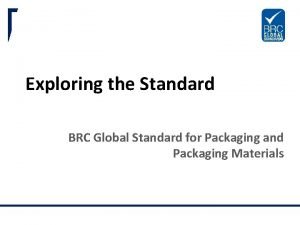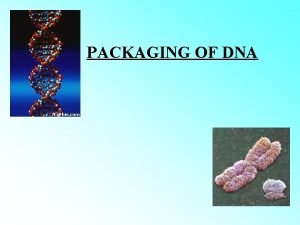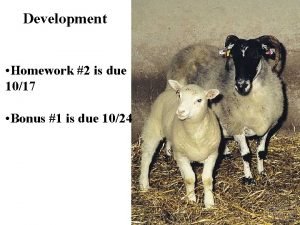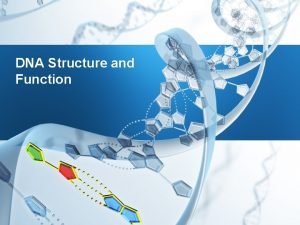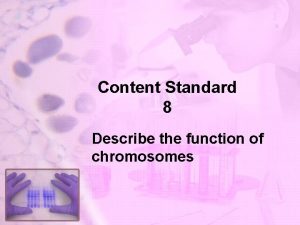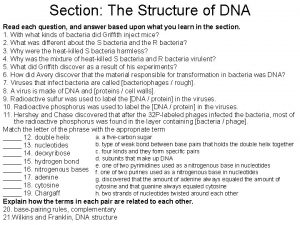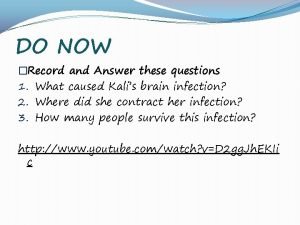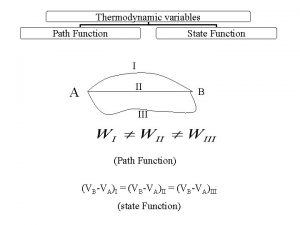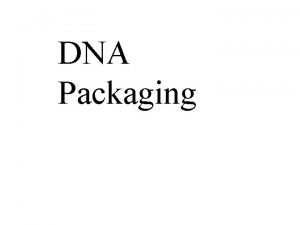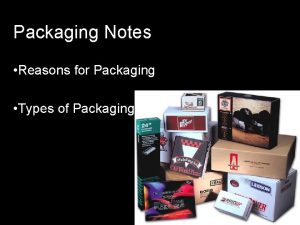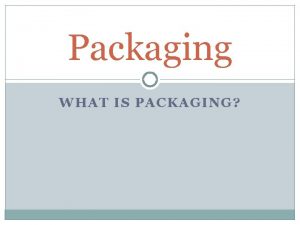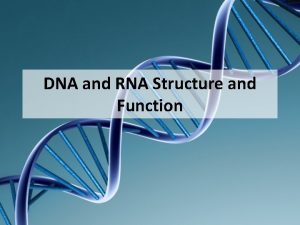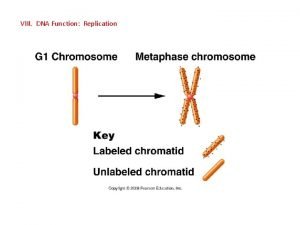Function and Packaging of DNA Packaging of DNA















- Slides: 15

Function and Packaging of DNA

Packaging of DNA • When a chromosome is not dividing, it can not be seen with a light microscope. • It is unwound into chromatin. • Prokaryote DNA is usually circular and very small. • Eukaryote chromosomes have an enormous amount DNA in a relatively short length.

Packaging of DNA • Each chromosome consists of a long unbroken length of DNA. This DNA needs to be packaged to fit into the nucleus along with all the other chromosomes.

Packaging of DNA • In chromatin, the DNA is wound around proteins called Histones. • The DNA-plus-histones forms a nucleosome. • Between the nucleosome beads the DNA continues as an open string.

Packaging of DNA • When the cell divides, the chromatin gets coiled up and packaged into the chromosome shape we see under the light microscope. • The beaded strings form tight chromatin coils called chromatin fibres

Packaging of DNA • These coils form loops called Looped domains, which are attached to a non-histone protein scaffold. • These looped domains coil and fold even more to form the characteristic chromosome you see during cell division.


Function of DNA • Carries the genetic code for the proper functioning of the organism. • Has the ability to replicate itself, so life can continue. • A DNA molecule is very long, and consists of thousands of genes positioned at set places along the DNA molecule (loci/locus).

Function of DNA • A gene is a length of DNA that codes for a polypeptide chain. • Proteins are made up of one or more polypeptide chains. The gene codes for protein. • Remember proteins are both the structure of the cell and the enzymes that run the cell so DNA controls the cell by controlling protein production.

DNA Replication • Before a cell divides, the DNA starts the process of replication. • The weak H-bonds between the bases break with the help of an enzyme called helicase. • The DNA molecule unwinds and unzips. • Each side of the original ladder acts as a template for a new strand.


DNA Replication • New nucleotides come in and join up using the strict base pairing rule. – A: T – C: G • The sides of the new ladder then join by forming bonds between the sugars and phosphates of the new nucleotides.


DNA Replication • The 2 new molecules of DNA wind up around each other reforming the double-helix shape. • The process results in the formation of 2 molecules of DNA, each with one old strand one new strand. • This is called Semi-conservative replication.

 Brc global standards directory
Brc global standards directory Packaging and packaging waste directive
Packaging and packaging waste directive Replication fork
Replication fork Tight helical fiber
Tight helical fiber Dna packaging
Dna packaging Coding dna and non coding dna
Coding dna and non coding dna Function of packaging
Function of packaging Food packaging function
Food packaging function Bioflix activity dna replication dna replication diagram
Bioflix activity dna replication dna replication diagram What role does dna polymerase play in copying dna?
What role does dna polymerase play in copying dna? Dna and genes chapter 11
Dna and genes chapter 11 Dna features
Dna features Chromosome
Chromosome Function of dna
Function of dna Tpurine
Tpurine Heat capacity is path function
Heat capacity is path function
